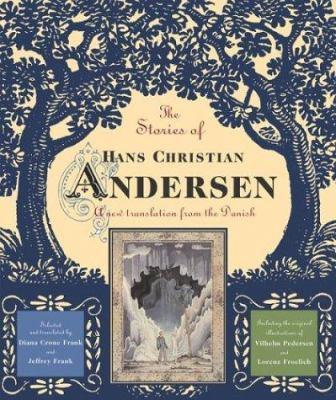
The stories of Hans Christian Andersen
Available Copies by Location
| Location | |
|---|---|
| Victoria | Available |
Browse Related Items
| Subject |
| Fairy tales > Denmark. |
- ISBN: 0618224564
- Physical Description 293 pages : illustrations
- Publisher Boston : Houghton Mifflin, 2003.
Content descriptions
| General Note: | "A new translation from the Danish"--Cover. |
| Bibliography, etc. Note: | Includes bibliographical references (pages 287-293). |
| Formatted Contents Note: | The real H. C. Andersen -- The tinderbox -- Little Claus and Big Claus -- The princess on the pea -- Thumbelisa -- The little mermaid -- The emperor's new clothes -- The wild swans -- The swineherd -- The nightingale -- The sweethearts -- The ugly duckling -- The Snow Queen -- The red shoes -- The little match girl -- The happy family -- The shadow -- By the outermost sea -- Hopeless Hans -- Kids' talk -- Father's always right -- The gardener and the aristocrats -- Auntie Toothache. |
| Immediate Source of Acquisition Note: | LSC 39.95 |
Additional Information

The Stories of Hans Christian Andersen : A New Translation from the Danish
Click an element below to view details:
Excerpt
The Stories of Hans Christian Andersen : A New Translation from the Danish
IntroductionThe Real H. C. AndersenIn the summer of 1874, a year before he died, Hans Christian Andersen got a fan letter from an American schoolgirl. Attached were a dollar bill and a newspaper clipping that detailed his bad health and supposed poverty. Soon, other children began sending small sums to pay off what a Philadelphia newspaper, the Evening Bulletin, had called the "childrens debt" to the Danish writer. The newspapers editor, Gibson Peacock, wrote to Andersen to explain that he knew "how little you had received in money from America, where your works have given so much delight," and that "various readers have sent me sums of money, none of them large, but all given cheerfully to be remitted to you." A week later Peacock wrote again to tell Andersen that "the largest part of the sums contributed to this little fund were given or collected by a widow and her children, who have taken great delight in your works." When the American ambassador personally gave Andersen two hundred Danish rix-dollars raised in the United States, Andersen, who was not at all impoverished, tried to put a stop to it. He wrote to Peacock to say that, although he was pleased that "my stories have found readers so far from my homeland and from the narrow confines of language," and of course deeply moved that so many American children were "breaking their little banks open to share what they have saved with their old author," he was not truly in need and could not accept the gifts. Rather than pride or gratitude, he wrote, he felt humiliation. (Although he did not say it, he also was annoyed at the smallness of the gift.) Andersens embarrassment may, however, have been offset by a certain satisfaction. All his life Andersen had wanted to be famous, to be recognized as an artist, sometimes to the point that this longing overshadowed everything else. "My name is gradually beginning to shine, and that is the only thing for which I live," he had written to his friend Henriette Hanck on September 20, 1837, when he was in his early thirties. "I covet honor and glory in the same way as the miser covets gold." He was now sixty-nine, and the American newspaper campaigns (another was started, then halted, by Whitelaw Reids New-York Tribune) were evidence of the breadth of his fame. By 1874 Hans Christian Andersen was perhaps better known than any other living writer, an international celebrity often found in the company of other celebrities, and his work had been widely read since the 1840s, although not always in the manner that he had intended. Stories such as "The Ugly Duckling," "The Emperors New Clothes," "Thumbelisa," and "The Little Match Girl" had already gone through so many interpretations and shoddy translations that the originals had been virtually obliterated. Mary Howitt, for instance, was an Englishwoman who didnt speak Danish and based her translations on the German texts; Caroline Peachey, an alarmingly improvisational British translator, exp Excerpted from The Stories of Hans Christian Andersen: A New Translation from the Danish All rights reserved by the original copyright owners. Excerpts are provided for display purposes only and may not be reproduced, reprinted or distributed without the written permission of the publisher.


